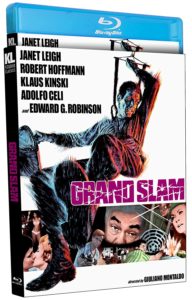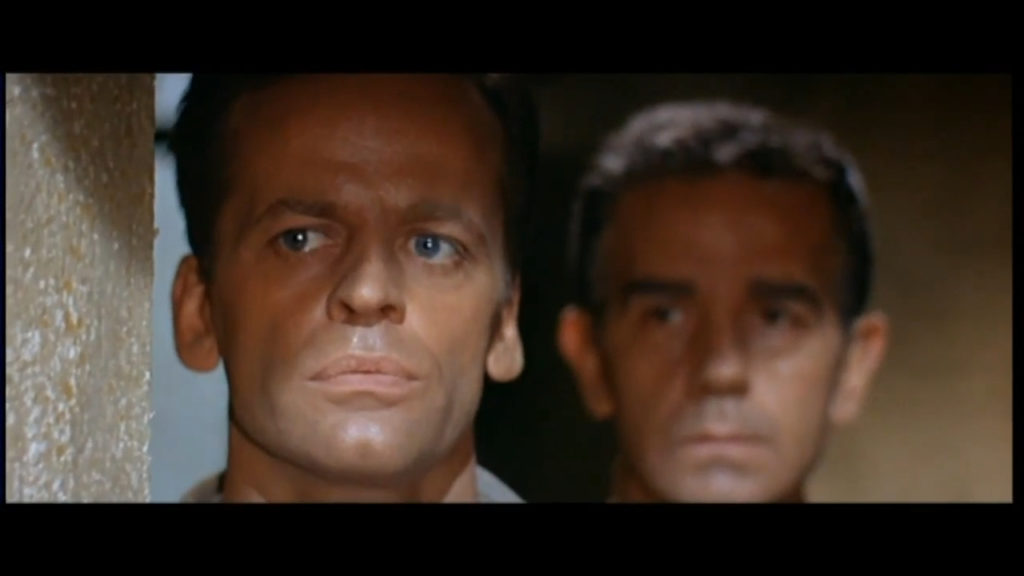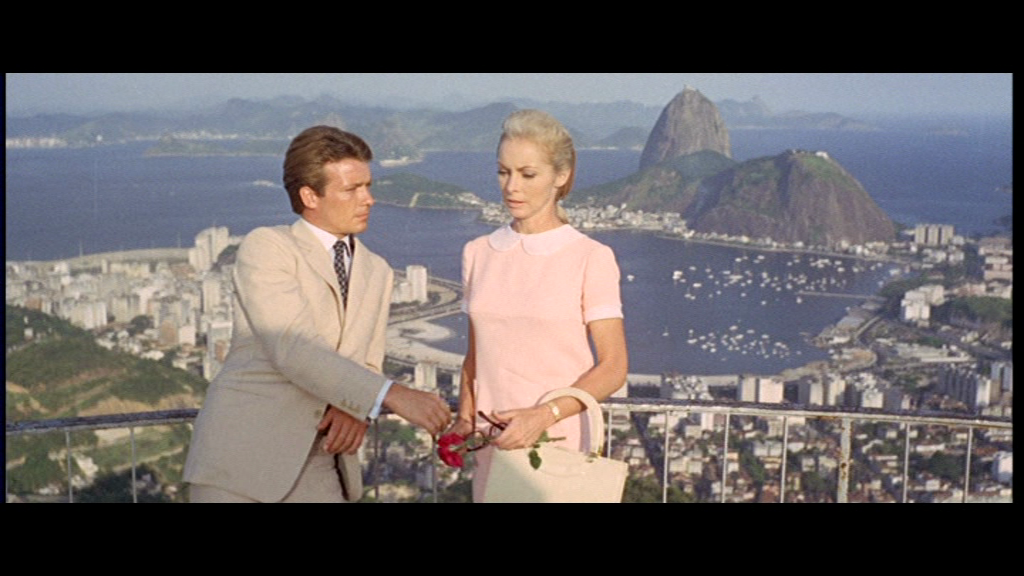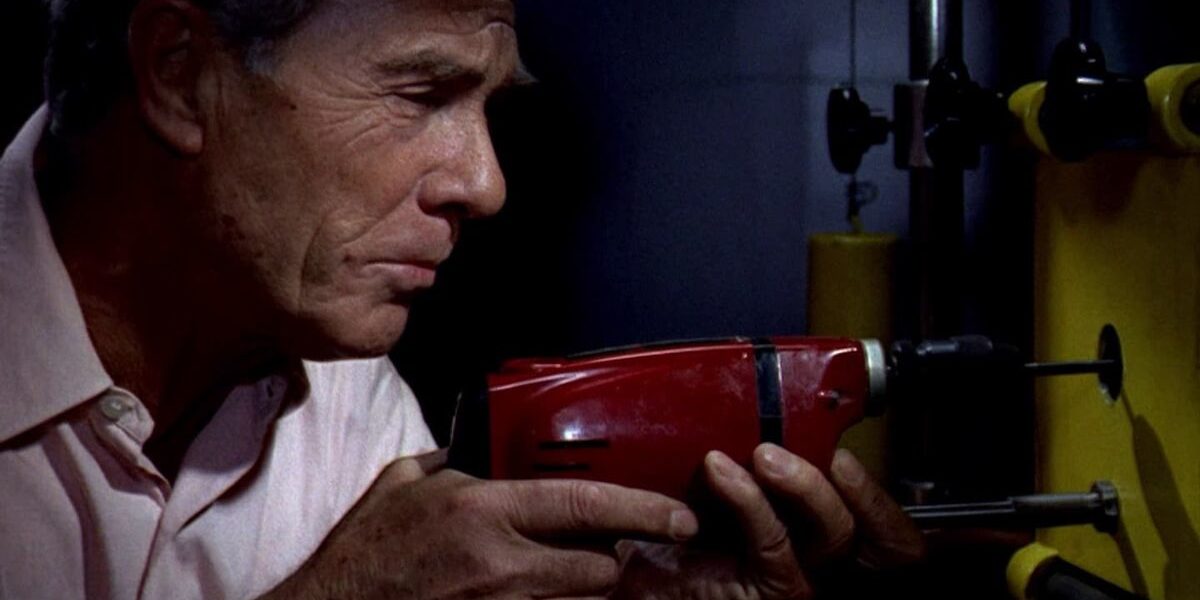Janet Leigh Holds the key to in Top-Notch Heist Thriller
DIRECTED BY GIULIANO MONTALDO/1967
BLU-RAY STREET DATE: APRIL 26, 2022/KL STUDIO CLASSICS

When things go south in heist pictures, look out. In director Giuliano Montaldo’s sublime Italian-Spanish-German safe-cracker Grand Slam (Ad ogni costo; 1967), everything goes south immediately, quite literally. The target of the film’s big job, $10 million in perfectly cut diamonds, is housed in a vault in South American in the southern end of Brazil, Rio de Janeiro. As for the heist itself, the question, as always, is how can it be done? Invariably, the stakes rise even after it’s been established that the job is gonna require some serious clockwork experience. Also invariably, unforeseen variables in the moment threaten to threaten everything. In other words, The Plan goes south. Count on it.
The whole allure of that popular niche of the crime genre is engaging with whatever high-stakes plan comes together and is subsequently carried out. Usually it’s a handpicked team of experts whom we see get recruited one by one in the first thirty minutes. Some readily agree, some say no way, but eventually, for whatever reasons, they’re all in. From there, they proceed to play their parts, so to speak. They’re professionals, hopefully ready and able to turn their own cog in the machine. Inevitably, said machine is never quite as well-oiled as it is envisioned. Can the crew roll with whatever unforeseen variables crop up?
In Grand Slam– an early taut, perpetually pleasing thriller in the “strictly business” mold, casting a degree of influence on the crime film to this day- there are no guarantees. Edward G. Robinson, playing a beloved retiring American professor who’s spent his teaching career in Rio de Janeiro, has decided to finally cash in. Meaning, he’s set to rob the rare diamond holding facility across the street from the school that he’s spent years carefully monitoring. He knows exactly when the next drop, valued at $10 million, will occur, as well as all subsequent internal protocol. As one would expect, place has one honey of a vault that would require quick cracking.

Robinson, who’s physical presence merely bookends the film, leaves the actual heist- and by extension, most of the rest of the movie- to his team of four handpicked recruits. This being a kindly, aged Robinson as opposed to the brutal, younger Robinson of Little Caesar (1931), the plan is not to hurt anyone. That may prove not so easy for the aggressive Erich Weiss, a former SS military man played ever on edge by Klaus Kinski. Weiss is there to oversee the smoothness of the operation, which hinges largely on the collaboration of the four-man team’s veteran British safecracker (a stately and confident George Rigaud) and Italian electronics expert (Riccardo Cucciolla). Their access, however, hinges on whether the team’s professional ladies man (Robert Hoffmann) can pull off his primary task: seduce the building’s only key holder, Mary Ann (Janet Leigh) long enough to swipe said key, hand it off to Weiss, and then safely return it before she suspects a thing. This aspect of The Plan, thanks to Mary Ann’s total disinterest in the bunches of flowers he keeps foisting upon her, proves far more challenging than anyone anticipates. Will the understandably annoyed and frigid Mary Ann warm up to this persistent playboy on time?
Meanwhile, with only one more day of prep, another major rub is discovered, this one in the vault itself. It is something called the Grand Slam 70- a newfangled security contraption that precisely detects the slightest variation in sound within the vicinity of a secured vault. The Grand Slam 70 seems to be the unevolved precursor to 1996’s Mission: Impossible Langley set-up. That De Palma thrill machine seems to owe Grand Slam quite the debt. (Dassin’s 1964 Topkapi is the Italian heist film often cited in this regard. It has the specifics of a theif being lowered to his prize, but there is of course plenty more in Mission: Impossible’s postmodern mix). Will be they be able to pull off an essentially silent heist? As the prospect of a $10 million haul proves too much to abandon, they of course opt to go forward with this not-so-standard smash n’ grab.
From the start, the otherwise grand Grand Slam is only marred by over-reliance on subpar process effects. From the moment we see a wistful Edward G. Robinson boarding a passenger jet but not actually getting any closer to it. The majestic exotic landscapes outside certain windows look like grainy movies custom-fitted onto the frames. This sort of thing is an overall weakness of films of this era; it’s just too bad that the intended international post-Dr. No Rio aspect often proves more a distraction than the intended faraway immersion. (Dr. No being the film credited with blowing up Rio in terms of global interest).

On the newly recorded Grand Slam commentary track, the great film historian trifecta of Howard S. Berger, Steve Mitchell and Nathaniel Thompson actually discuss the above points as well as how the plot mechanics of this film remind them of the classic Mission: Impossible TV series. They rightly point out that although the assembly of thieves aren’t given a ton of personal depth, the characters are granted enough novel details to set them apart from the weekly M:I IMF automatons. This is one of many casually shared observations that Berger, Mitchell and Thompson can be routinely counted on in their terrific commentary tracks. Their Grand Slam effort is in every way worthy of this exceptional gem of a film.
The blu-ray itself, now available from KL Studio Classics, doesn’t look exactly pristine. Any film with these types of process shots throughout is going to have this problem, due in large part to initial degradations that come with the image conforming process. That said, the widescreen image does look as good as it’s likely ever looked. If that doesn’t make the sale, perhaps the nice vintage art slipcover will.
Director Montaldo (1971’s Sacco & Vanzetti) keeps things moving not unlike the increasingly complicated heist depicted. The plot unfolds concurrently with Rio’s annual Carnival, a vibrant and rhythmically noisy celebration that goes on and on in the streets outside. This allows Montaldo to alternate between the desperate quiet of the robbery inside and the cut-loose din of the revelry everywhere else. At a pivotal moment, the crowded parade is the only thing preventing a vital object from being handed off as planned. They’re simply on opposite sides of the street. The resolution of this situation is particularly inspired.
At a glance, it’s all rather conventional. Its release date is also early enough to be considered formative in the contemporary lineage of such caper-based films of its ilk. Grand Slam, though, has its share of surprises. Things can, of course, do potentially go south… right up the very end.


